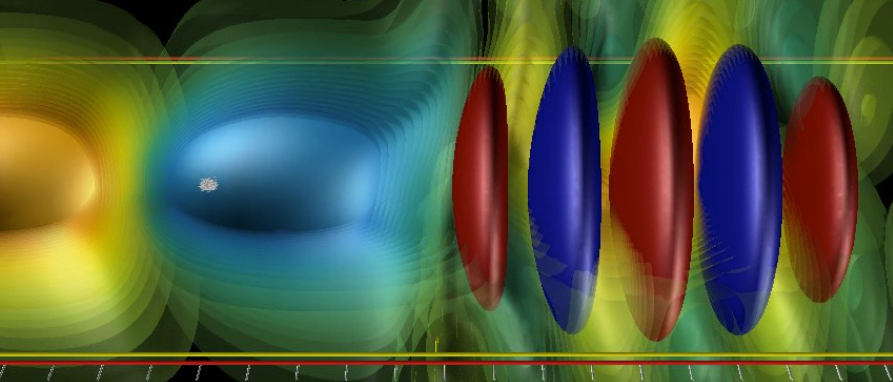Particle accelerators are on the verge of transformational breakthroughs—and advances in computing power and techniques are a big part of the reason.
Long valued for their role in scientific discovery and in medical and industrial applications such as cancer treatment, food sterilization and drug development, particle accelerators, unfortunately, occupy a lot of space and carry hefty price tags. The Large Hadron Collider at CERN in France and Switzerland, for example—the world’s largest and most powerful particle accelerator—has a circumference of 17 miles and cost $10 billion to build. Even smaller accelerators, such as those used in medical centers for proton therapy, need large spaces to accommodate the hardware, power supplies and radiation shielding. Such treatment facilities typically fill a city block and cost hundreds of millions of dollars to build.
But efforts are under way to make this technology more affordable and accessible by shrinking both the size and the cost without losing the capability. One of the most exciting developments is the plasma accelerator, which uses lasers or particle beams rather than radio-frequency waves to generate the accelerating field. Researchers have already shown the potential for laser plasma acceleration to yield significantly more-compact accelerators. But further development is needed before these devices—envisioned as almost literally “tabletop” in many useful applications—make their way into everyday use.
Laser wakefield particle accelerators offer the prospect of less costly and much smaller accelerators. Using the waves created by a laser shot through plasma they “surf” particles to higher speeds (or energies). This simulation shows how a single electron rides a wave, helping researchers build and refine these new machines. (Courtesy: Jean-Luc Vay, Berkeley Lab)
This is where advanced visualization tools and supercomputers such as NERSC’s Edison and Cori systems come in.
“To take full advantage of the societal benefits of particle accelerators, game-changing improvements are needed in the size and cost of accelerators, and plasma-based particle accelerators stand apart in their potential for these improvements,” said Jean-Luc Vay, a senior physicist in Berkeley Lab’s Accelerator Technology and Applied Physics Division (ATAP).
Vay is leading a particle accelerator modeling project as part of the NESAP program at Berkeley Lab’s National Energy Research Scientific Computing Center (NERSC) and is the principal investigator on one of the newexascale computing projects sponsored by the U.S. Department of Energy (DOE). “Turning this from a promising technology into a mainstream scientific tool depends critically on large-scale, high-performance, high-fidelity modeling of complex processes that develop over a wide range of space and time scales,” he said.
To read the rest of the story, go here.
